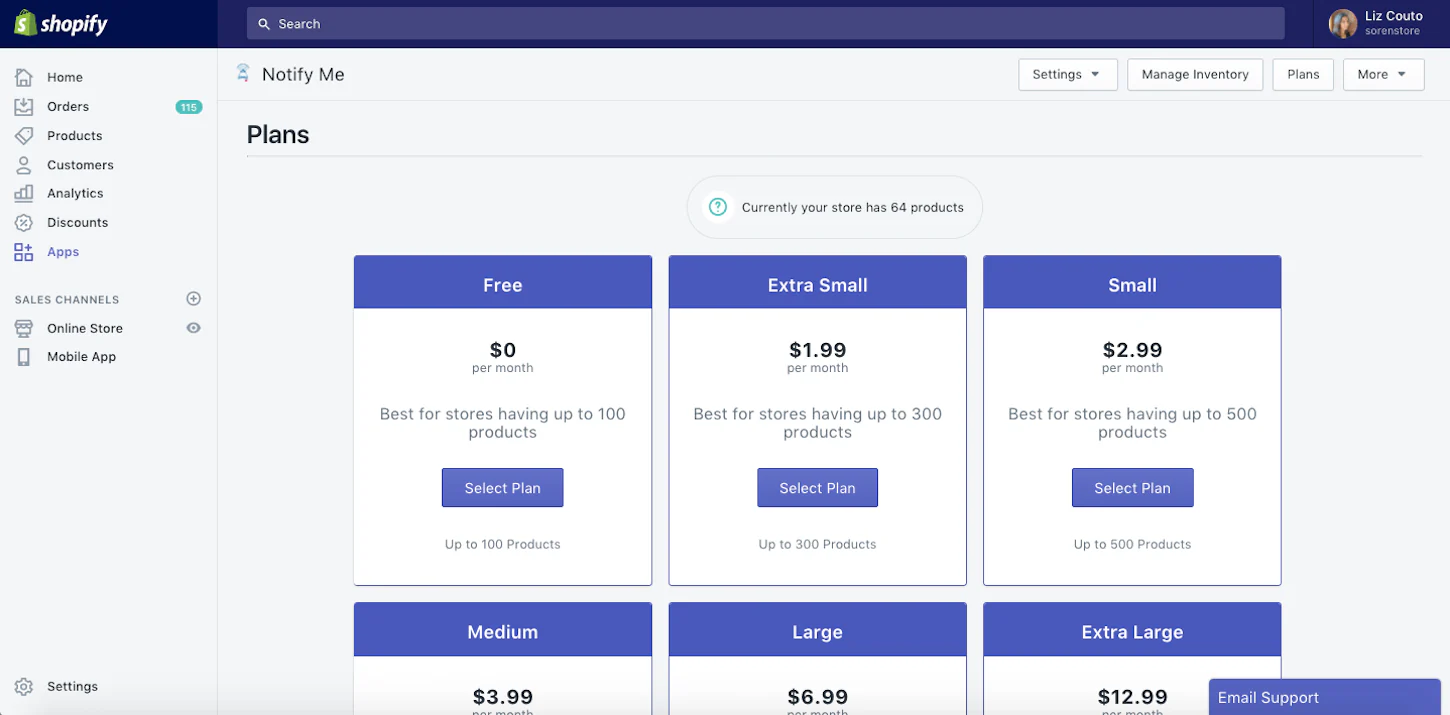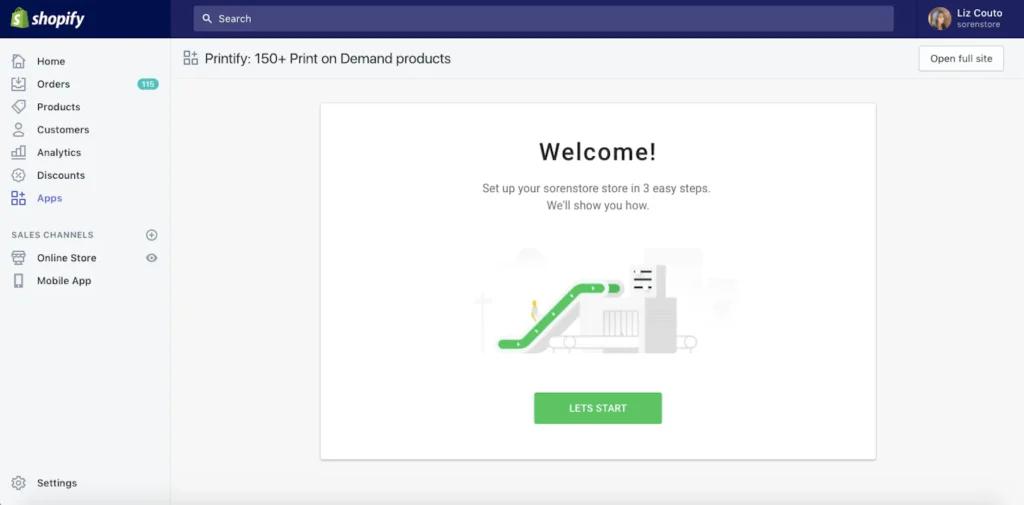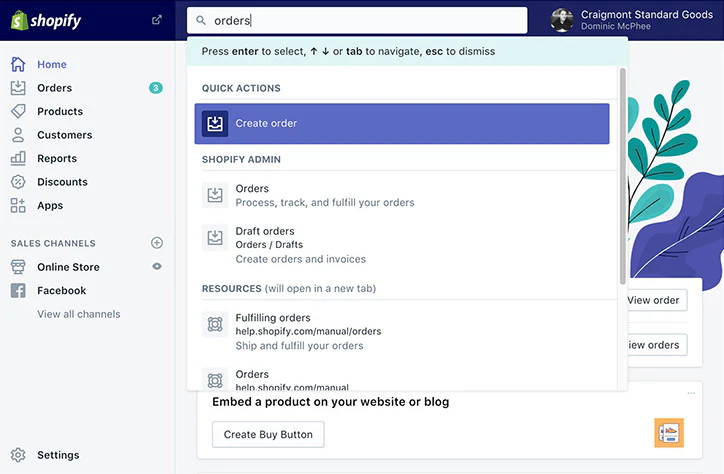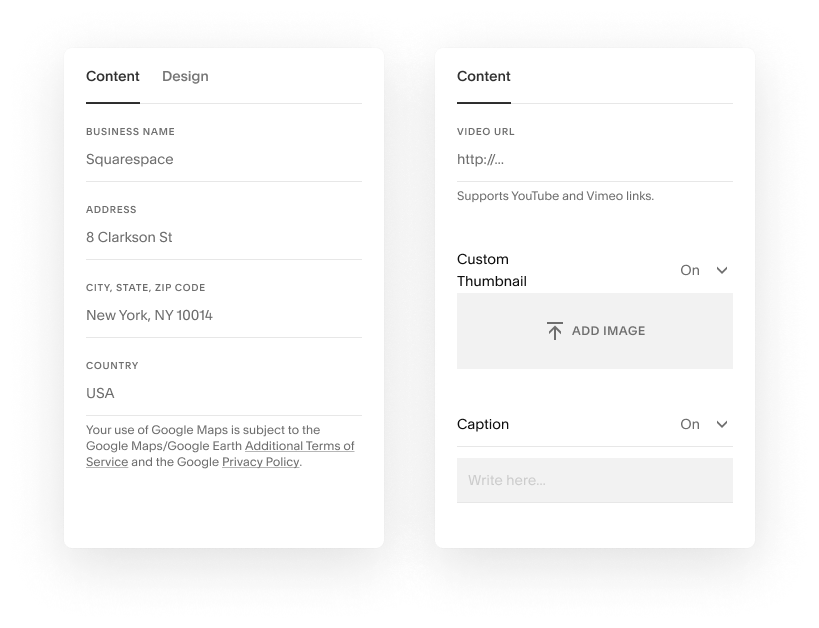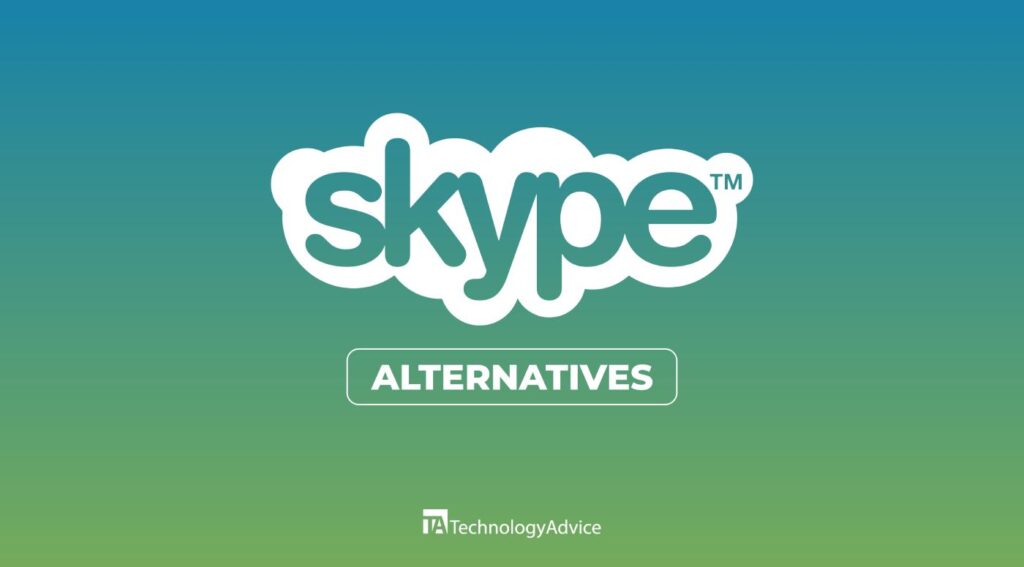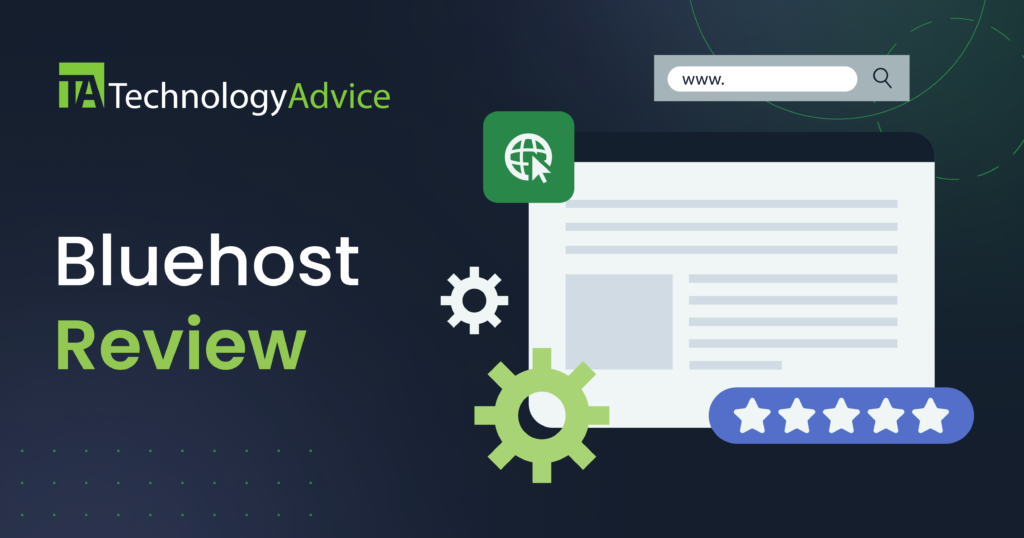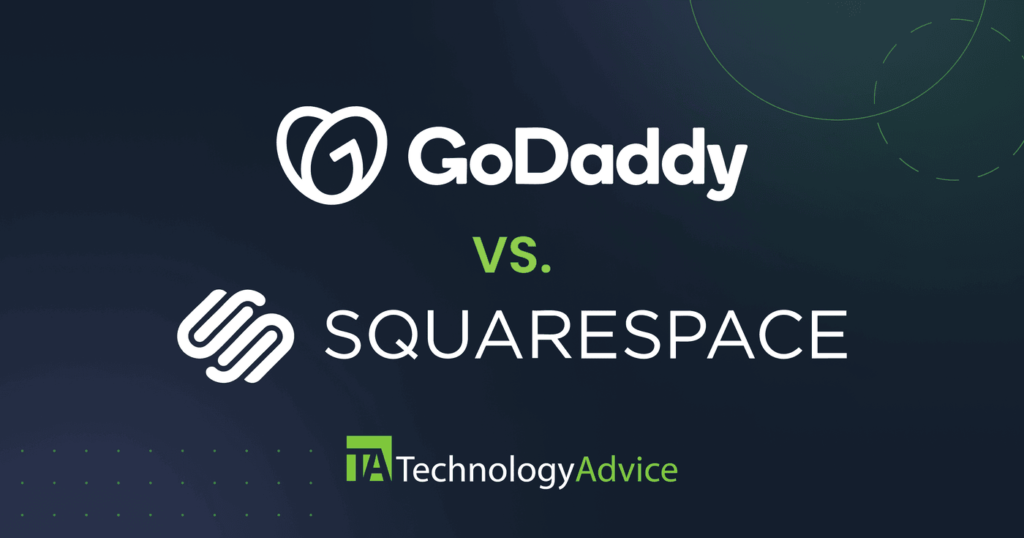Key takeaways
- Shopify and Squarespace cater to different needs. Shopify is built for serious online selling, while Squarespace focuses on design and content-driven websites with basic eCommerce functionality.
- Shopify excels in scalability and advanced sales tools, making it a strong choice for growing businesses that need inventory management, multichannel selling, and powerful integrations.
- Squarespace is a great option for visually-focused brands and creators, offering sleek design templates, an easy-to-use website builder, and strong blogging and SEO capabilities.
Shopify vs Squarespace at a glance
Shopify and Squarespace are two of the biggest names in website building, but they serve different kinds of businesses. If you’re focused on scaling an online store with powerful sales tools, Shopify is the way to go. Meanwhile, Squarespace shines for brands that prioritize design and content, with e-commerce as a secondary feature rather than the main event.
In terms of Squarespace versus Shopify, the main difference is in their use cases. Shopify is a dedicated e-commerce powerhouse for businesses prioritizing sales, scalability, and a wide range of integrations, offering robust inventory management, multichannel selling, and advanced analytics.
On the other hand, Squarespace is known for its visually stunning templates and user-friendly interface. While it supports e-commerce, its strengths lie in content-driven websites — an excellent choice for small businesses, artists, and service providers who want a strong brand presence with light e-commerce functionality.
Shopify
Squarespace
Starting price
$19/month
$16/month
Best for
Scalable e-commerce businesses
Content-driven businesses and creatives
eCommerce features
Great for e-commerce, scalable to enterprise-level stores
Better for small businesses
SEO and blogging
Has SEO tools that helps visibility and ranking; offers a basic blogging tool though it’s not the focus of the service.
Offers SEO tools, mobile-friendly templates, and tailor-fit for content-driven marketing.
For more information
Shopify: Best for scalable e-commerce businesses

Shopify is an industry leader in e-commerce, offering a comprehensive platform for businesses that want to scale. With an intuitive interface, extensive app marketplace, and seamless integrations with social media and marketplaces like Amazon, Shopify is ideal for serious online sellers. It supports unlimited products, advanced analytics, and multiple payment gateways, making it a top choice for businesses prioritizing growth.
Additionally, Shopify’s inventory management, customizable themes, and mobile-friendly checkout provide a streamlined shopping experience for customers. Its robust security features and dedicated customer support ensure businesses can operate with confidence.
Pros
- Scalable for large businesses
- Extensive app marketplace
- Multichannel selling options
- Strong inventory management
- Reliable customer support
Cons
- Transaction fees without Shopify Payments
- Monthly costs can add up
- Limited design customization
Squarespace: Best for content-driven businesses and creatives

Squarespace is well-known for its beautifully designed templates and ease of use, making it the best choice for those focused on branding and content. Its drag-and-drop editor allows users to create visually stunning websites without coding experience.
While it includes e-commerce functionality, it is better suited for small stores with a limited product catalog rather than large-scale operations. Squarespace offers built-in marketing tools, blogging features, and a sleek, mobile-responsive design, making it a favorite among creatives, freelancers, and service-based businesses.
Pros
- High-quality design templates
- Intuitive drag-and-drop builder
- Strong blogging features
- Built-in SEO and marketing tools
Cons
- Limited e-commerce scalability
- Fewer third-party integrations
- Basic inventory management
Shopify vs. Squarespace: Our ratings
Category
Shopify
Squarspace
Pricing
1.96
3.39
Performance
4.17
3.54
General features
3.88
4
Integrations and compatibility
4.22
4.38
Ease of use and support
3.91
3.91
Security features
4.82
3.93
User scores
4.47
4.5
Overall rating
3.92/5
3.95/5
Shopify vs. Squarespace: Pricing
When you’re thinking of going for one of Shopify or Squarespace, the first thing you should consider is their pricing. It’s essential to understand each platform’s different plans to determine which aligns best with your business needs.
| Starting price | Shopify | Squarespace |
| Annual prices | $19/month | $16/month |
| Monthly prices | $25/month | $25/month |
In terms of pricing, Squarespace offers more affordable entry-level plans, making it a cost-effective choice for individuals and small businesses focusing on content and design. However, for businesses prioritizing robust e-commerce capabilities and scalability, Shopify’s higher-tier plans provide more comprehensive features, justifying the higher cost. Therefore, the best choice depends on your business’s specific needs and growth plans.
Shopify vs Squarespace: Ease of use
Aside from pricing, ease of use is the next crucial point you should consider. Ease of use can dictate your experience with either Squarespace or Shopify — after all, even with a huge array of features, they might not be fully used if they’re not accessible or intuitive.
| Shopify | Squarespace |
| Better for e-commerce-specific needs.Comes with tools that let you create an online store quickly. | Better for users who prioritize aesthetic control and creative content.Those looking for extensive e-commerce automation may find it less intuitive than Shopify. |
Shopify is built specifically for e-commerce, offering a streamlined setup process and user-friendly interface. Its dashboard is well-organized, and its guided setup helps users create an online store quickly. Squarespace, on the other hand, prioritizes design flexibility and content management, featuring a drag-and-drop editor that makes customization easy.
Overall, if we’re talking Squarespace vs. Shopify, Shopify is easier for selling products, while Squarespace provides a smoother experience for website design.
Read more: Best Website Hosting Services & Companies
Shopify vs. Squarespace: eCommerce features
When it comes to e-commerce features, Shopify and Squarespace both provide tools to help businesses sell online, but their approaches differ significantly.
| Shopify | Squarespace |
| For businesses that require robust e-commerce functionality and growth potential | More suited for small businesses and content creators who sell a limited number of products |
So, how does the difference play out in Squarespace vs Shopify for ecommerce? Long story short, Shopify is a dedicated e-commerce platform with extensive sales features, while Squarespace is a website builder with added e-commerce capabilities.
Shopify offers a comprehensive set of tools for inventory management, multi-channel selling, and advanced analytics. Conversely, Squarespace provides a more straightforward e-commerce experience focused on aesthetically pleasing storefronts and essential selling features.
Shopify vs Squarespace: SEO and blogging
So, Squarespace vs Shopify: which is better for SEO and blogging? While Shopify is better for e-commerce SEO, Squarespace is the superior choice for content-driven websites.
Both Squarespace and Shopify provide essential tools but cater to different needs.
| Shopify | Squarespace |
| Basic blogging featuresSEO tools more focused on online stores | Blogging and content marketing featuresSocials integrationBest for content marketing |
Shopify offers built-in SEO features tailored for online stores, including structured data, automatic sitemap generation, and URL customization. However, its blogging functionality is basic compared to Squarespace.
On the other hand, Squarespace excels in blogging and content marketing, featuring elegant blog templates, built-in SEO settings, and seamless social media integration.
Alternatives to Shopify and Squarespace
Even after a rundown of Shopify versus Squarespace, you might still find that neither is hitting all the right checkmarks. So, let’s look at a few alternatives that might be more suited to your needs:
Helcim

Helcim is an excellent alternative for businesses prioritizing e-commerce and in-person sales. Unlike Shopify and Squarespace, Helcim focuses on merchant services, offering a secure payment gateway with transparent pricing. It provides flexible payment solutions without monthly fees, making it a cost-effective choice for businesses that want a simple, scalable payment processing system.
Stripe

Stripe is a powerful payment processing platform that integrates seamlessly with various business models. Unlike Shopify and Squarespace, which provide all-in-one website building and selling solutions, Stripe is best suited for businesses looking for a customizable payment gateway with advanced APIs. It supports global transactions and subscription management, making it a strong contender for tech-savvy entrepreneurs.
Lightspeed

Lightspeed is a comprehensive platform designed specifically for retailers and restaurateurs. While Shopify and Squarespace cater to general e-commerce and content-driven sites, Lightspeed offers industry-specific tools like POS integration, inventory tracking, and customer insights. It’s an ideal alternative for brick-and-mortar businesses needing a hybrid online and in-person sales solution.
Square
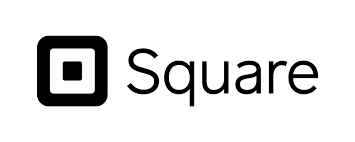
Square is a versatile option that provides businesses with the tools they need to run and grow. It focuses on point-of-sale solutions and includes e-commerce capabilities. With no monthly fees for its basic plan and easy integration with physical stores, Square is an excellent choice for small businesses looking for an affordable, all-in-one solution.
Read More: Square vs Shopify: Which is Best for Your Business in 2025?
What to consider when choosing an eCommerce platform
Choosing between Squarespace vs Shopify depends on several factors, including ease of use, pricing, scalability, and design flexibility. Both Shopify or Squarespace can work for those focused on scaling, but Shopify offers better inventory management and multichannel selling.
Ultimately, choosing between Squarespace vs Shopify comes down to whether your priority is selling products at scale or maintaining a visually-driven website with light eCommerce features.
Who should use Shopify or Squarespace?
Deciding between Shopify or Squarespace depends on your business needs. Shopify is designed for serious online sellers who require powerful eCommerce features. If you’re focused on growing an online store with extensive product catalogs and advanced reporting tools, Shopify or Squarespace won’t be a difficult choice — Shopify is the better fit.
Conversely, Squarespace vs Shopify leans in Squarespace’s favor when it comes to businesses that prioritize content, branding, and design. Photographers, artists, bloggers, and small service providers will find Squarespace’s intuitive drag-and-drop builder more suitable. If eCommerce is secondary to a strong visual presence, Squarespace with Shopify integration could offer a balanced solution.
How do Shopify and Squarespace compare to other website builders?
When evaluating Shopify vs Squarespace, it’s important to consider how they stack up against other website builders like Wix, WordPress, and BigCommerce. Wix offers a balance between eCommerce and design but lacks Shopify’s robust selling features. WordPress provides ultimate flexibility but requires more technical expertise and third-party plugins for full eCommerce functionality.
If you’re comparing Squarespace vs Shopify against BigCommerce, Shopify comes out ahead in ease of use, but BigCommerce may offer more flexibility for high-volume sellers. Squarespace with Shopify integration can be a good middle ground for businesses that need the best of both worlds — beautiful website design with access to Shopify’s superior eCommerce tools.
FAQ
Which platform is best for ecommerce?
Shopify is the best choice for e-commerce businesses, especially those looking for scalability and advanced sales features. It offers powerful inventory management, multichannel selling, and a vast app marketplace. Squarespace is a better option for small businesses prioritizing design and content over complex e-commerce needs.
What is the downside to Squarespace?
Squarespace is known for its stunning designs and ease of use, but it has some limitations. Its e-commerce functionality is less robust than Shopify’s, making it less suitable for large or high-volume online stores. Additionally, Squarespace has fewer third-party integrations, which can limit scalability for growing businesses.
What are the disadvantages of Shopify?
Shopify’s biggest drawback is its cost, as monthly fees and transaction costs can add up, especially for smaller businesses. While it offers extensive customization, advanced design modifications require coding knowledge or paid themes. Additionally, you’ll have to pay extra transaction fees for third-party payment processors unless you use Shopify Payments.




